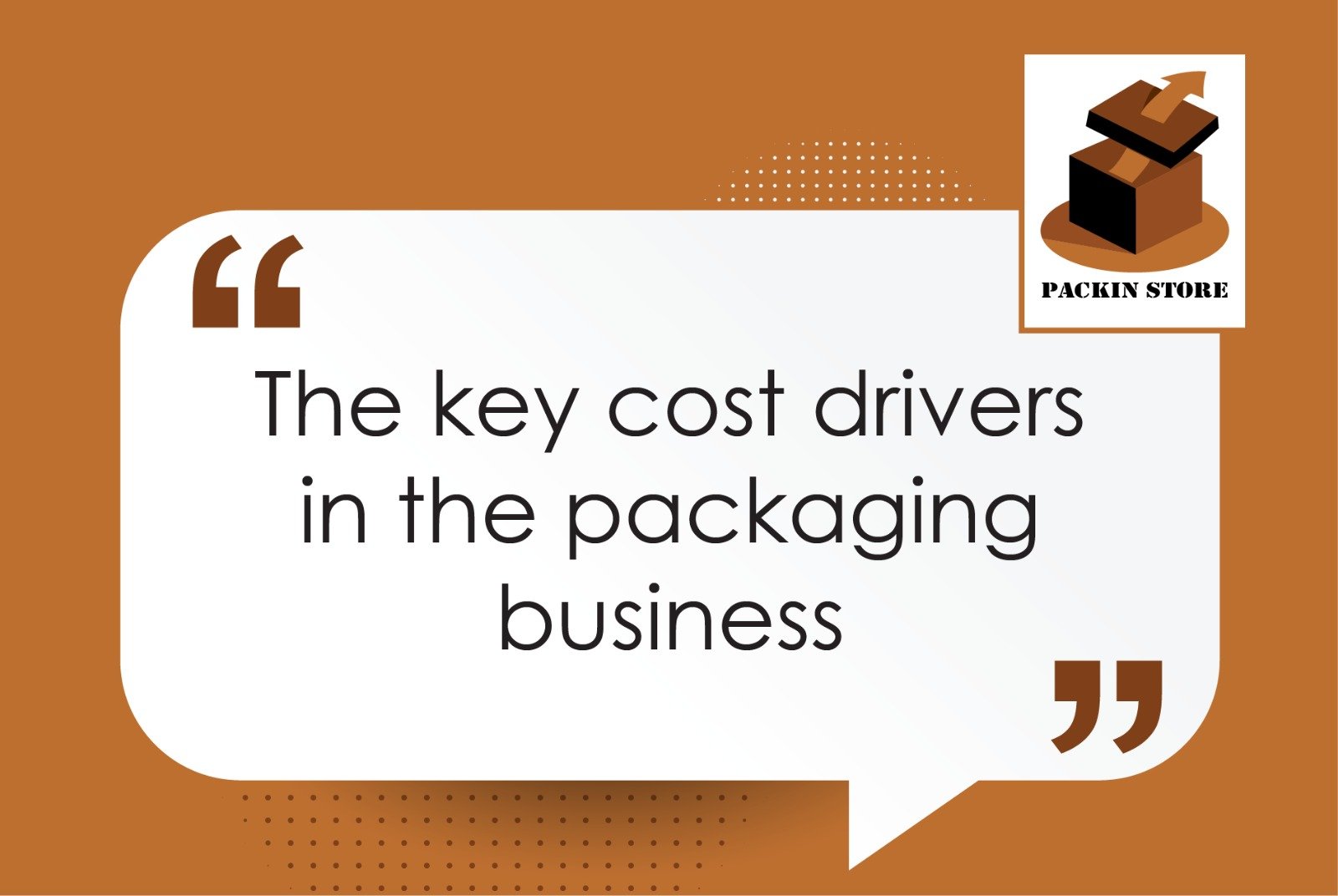The packaging industry, a crucial element in the global supply chain, faces several financial challenges that impact profitability and operational efficiency. Understanding and managing key cost drivers, navigating fluctuations in raw material prices, and effectively managing financial risks are essential for maintaining a healthy bottom line. Additionally, assessing the return on investment (ROI) for new technologies and market expansions can guide strategic decision-making. This article explores these aspects and provides insights into effective management strategies.
Key Cost Drivers in the Packaging Business and How to Manage Them
1. Raw Material Costs
Raw material costs are a significant driver of packaging expenses. These materials include plastics, paper, glass, and metals, each with its own cost dynamics:
Material Sourcing: To manage raw material costs, companies should establish strong relationships with multiple suppliers. This diversification helps negotiate better terms and mitigate the impact of price fluctuations.
Bulk Purchasing: Leveraging bulk purchasing agreements can reduce per-unit costs. However, it’s essential to balance bulk purchases with inventory management to avoid overstocking and obsolescence.
Material Substitution: Evaluate alternative materials that offer cost savings without compromising quality. Innovations in sustainable materials can sometimes be more cost-effective in the long run.
2. Manufacturing and Production Costs
Manufacturing and production costs encompass labor, energy, and maintenance expenses:
Energy Efficiency: Invest in energy-efficient machinery and practices to reduce utility costs. Upgrading to energy-efficient systems can lead to significant savings over time.
Labor Costs: Optimize labor costs through process automation and lean manufacturing practices. Automation reduces the need for manual labor and improves production efficiency.
Maintenance Programs: Implement preventive maintenance programs to avoid unplanned downtime and costly repairs. Regular maintenance extends the lifespan of equipment and ensures consistent production quality.
3. Transportation and Logistics Costs
Transportation and logistics costs include shipping, warehousing, and distribution expenses:
Route Optimization: Use logistics management software to optimize transportation routes and reduce fuel consumption. Efficient routing minimizes shipping costs and improves delivery times.
Warehouse Management: Implement advanced warehouse management systems to streamline inventory control and reduce storage costs. Efficient warehouse operations help manage inventory levels and reduce holding costs.
4. Regulatory Compliance and Quality Control
Compliance with regulations and maintaining quality standards can impact costs:
Compliance Costs: Stay updated on industry regulations and standards to avoid fines and compliance-related expenses. Implementing best practices and investing in compliance training can prevent costly violations.
Quality Control: Invest in robust quality control processes to reduce defects and returns. High-quality packaging minimizes rework and enhances customer satisfaction.
Impact of Raw Material Price Fluctuations on Profitability
1. Price Volatility
Raw material prices can fluctuate due to factors such as supply chain disruptions, geopolitical events, and market demand shifts. These fluctuations can significantly impact profitability:
Cost Pass-Through: Implement cost pass-through clauses in contracts to adjust pricing in response to raw material cost changes. This approach helps protect margins by transferring some cost increases to customers.
Hedging Strategies: Consider hedging strategies to lock in raw material prices and mitigate the impact of price volatility. Hedging can provide price stability and help manage budget forecasts.
2. Strategic Sourcing and Inventory Management
Effective sourcing and inventory management can buffer against price fluctuations:
Long-Term Contracts: Negotiate long-term contracts with suppliers to secure stable prices and reduce exposure to market volatility. Long-term agreements can provide price stability and favorable terms.
Inventory Buffering: Maintain safety stock or buffer inventory to manage short-term price fluctuations. Adequate inventory levels help ensure a steady supply and reduce the impact of sudden price increases.
Managing Financial Risks in the Packaging Industry
1. Currency Fluctuations
For packaging companies engaged in international trade, currency fluctuations can impact profitability:
Currency Hedging: Use financial instruments such as forward contracts or options to hedge against currency risk. Hedging strategies can lock in exchange rates and mitigate the impact of currency fluctuations.
Diversification: Diversify markets and revenue streams to reduce reliance on any single currency. Revenue from multiple currencies can help offset the impact of currency fluctuations on overall financial performance.
2. Trade Policy Changes
Changes in trade policies, such as tariffs and trade agreements, can affect packaging businesses:
Policy Monitoring: Stay informed about changes in trade policies and their potential impact on your business. Regularly review trade agreements and tariff structures to assess their effects on costs and profitability.
Adaptation Strategies: Develop adaptation strategies to respond to trade policy changes. This may include adjusting sourcing strategies, exploring new markets, or modifying product offerings to align with new trade regulations.
3. Economic and Political Risks
Economic and political instability can impact supply chains and financial stability:
Risk Assessment: Conduct regular risk assessments to identify potential economic and political risks that could affect your business. Evaluate factors such as geopolitical tensions, economic downturns, and regulatory changes.
Contingency Planning: Develop contingency plans to address potential risks. Outline procedures for managing supply chain disruptions, market fluctuations, and financial uncertainties.
Assessing ROI for New Technologies and Market Expansions
1. Cost-Benefit Analysis
Performing a cost-benefit analysis helps evaluate the potential ROI of new technologies or market expansions:
Initial Investment: Assess the initial investment required for adopting new technologies or entering new markets. Include costs such as equipment purchases, technology implementation, and market entry expenses.
Expected Benefits: Estimate the expected benefits, such as increased efficiency, reduced costs, or higher revenue. Quantify potential improvements in productivity, customer satisfaction, and market share.
2. Performance Metrics
Use performance metrics to measure the success of new initiatives:
ROI Calculation: Calculate ROI by comparing the financial benefits gained against the costs incurred. The ROI formula is: ROI = (Net Profit / Investment Cost) x 100.
Key Performance Indicators (KPIs): Track KPIs related to the new technology or market expansion, such as cost savings, revenue growth, and operational efficiency. Regularly review performance data to assess the effectiveness of the investment.
3. Pilot Testing
Conduct pilot tests before full-scale implementation:
Small-Scale Trials: Run pilot projects or trials to test new technologies or market strategies on a smaller scale. Evaluate performance, identify potential issues, and gather feedback before committing to a larger investment.
Scalability Assessment: Assess the scalability of new technologies or market entry strategies. Ensure that the solution can be scaled effectively to meet growing demands or expanding markets.
Conclusion
Managing costs, navigating raw material price fluctuations, mitigating financial risks, and assessing ROI are crucial for maintaining profitability in the packaging industry. By focusing on key cost drivers, implementing effective risk management strategies, and conducting thorough ROI assessments, packaging companies can make informed decisions that drive long-term success. Staying agile and proactive in addressing financial challenges ensures that businesses remain competitive and resilient in a dynamic market landscape.



